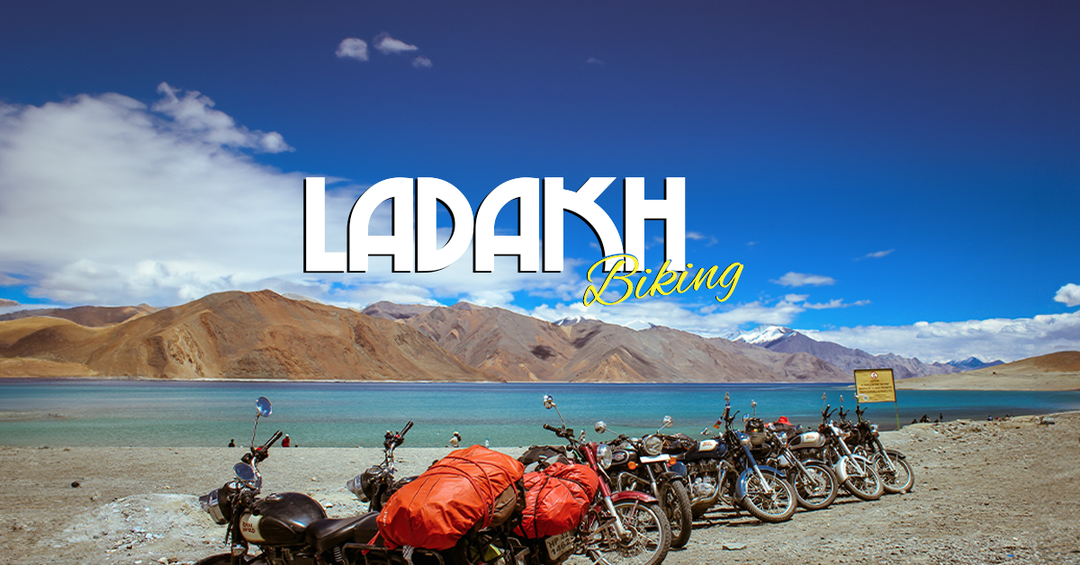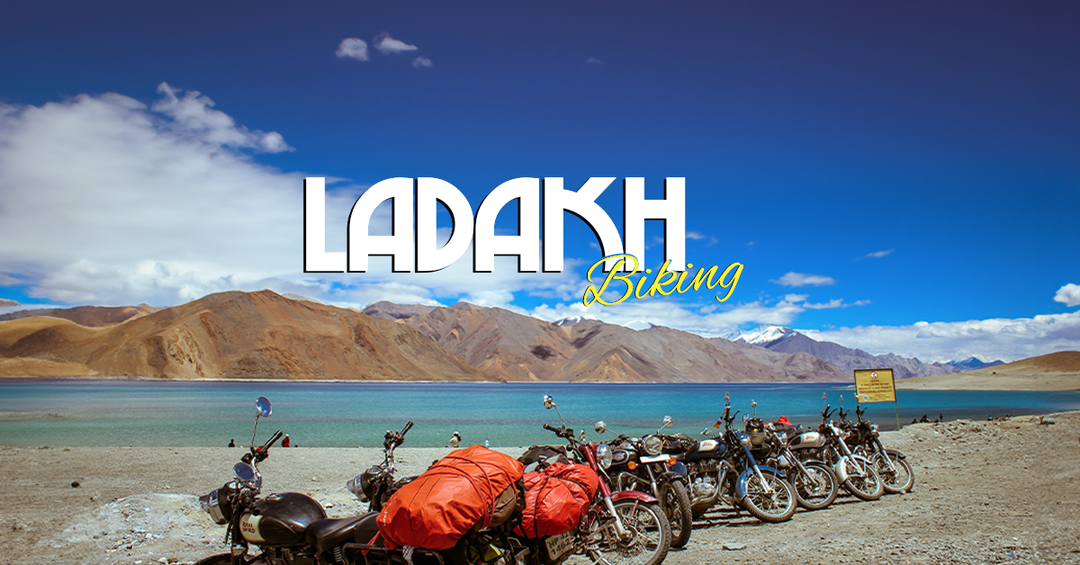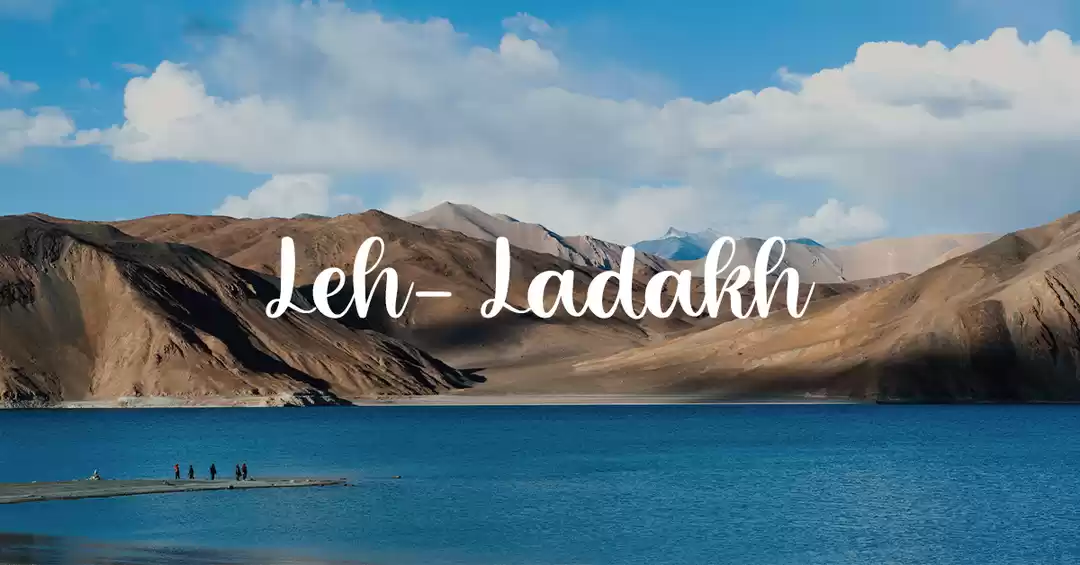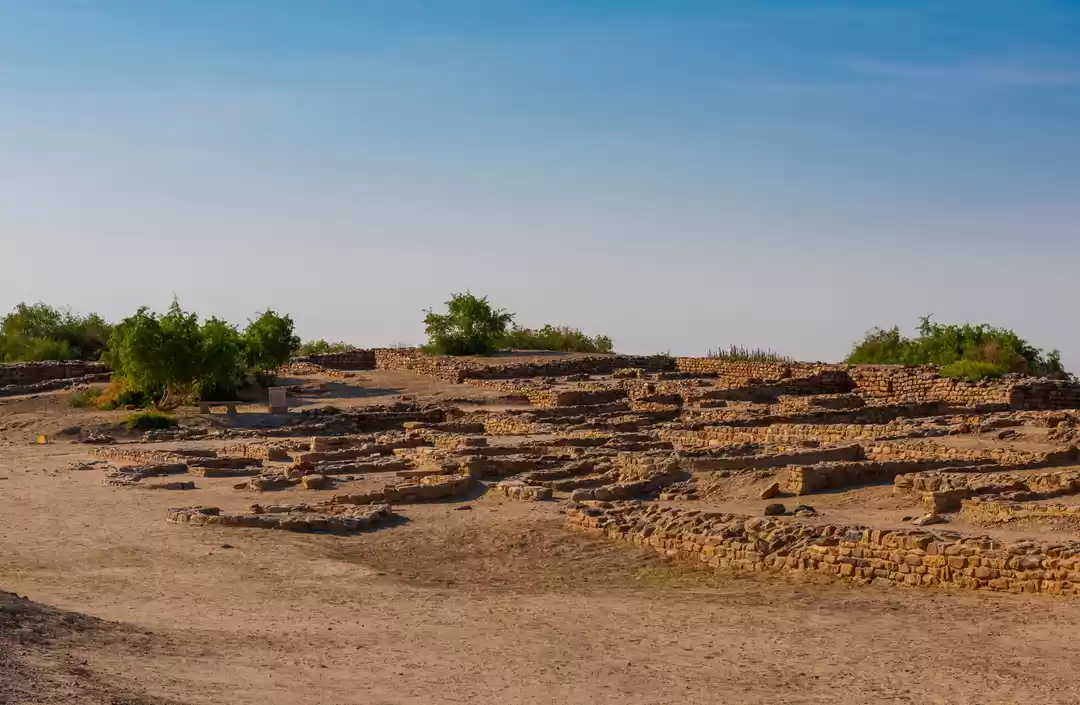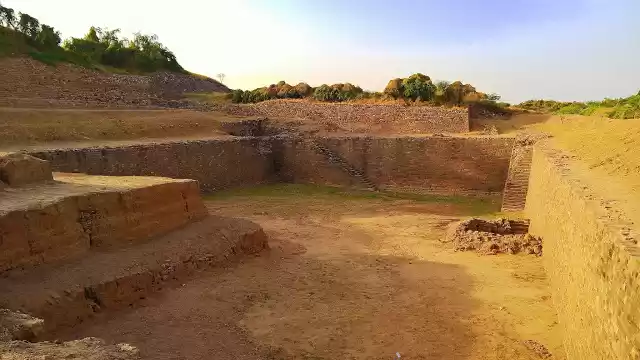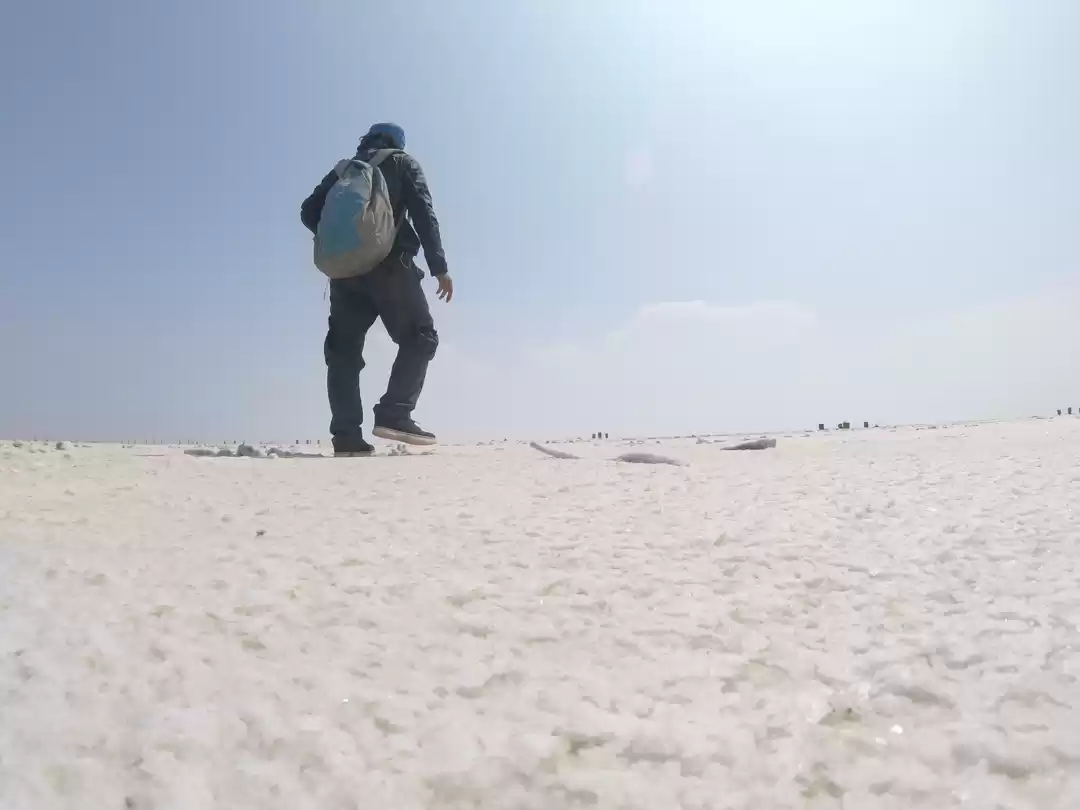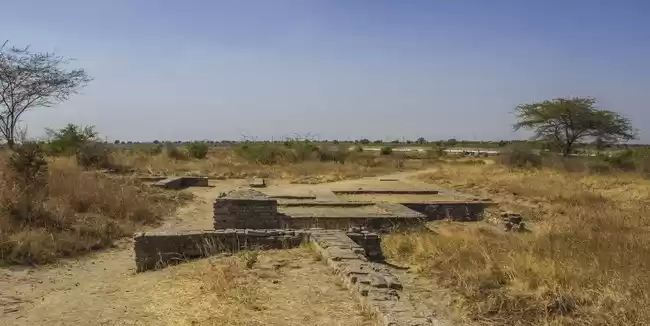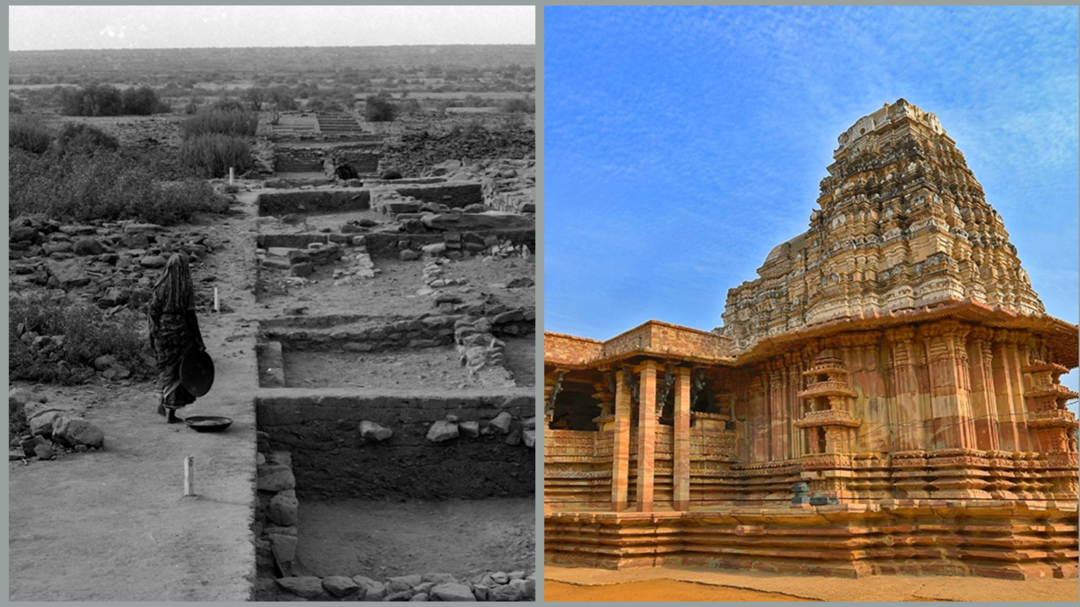
More than two millennia before the Common Era, when humans in many parts of the world were still in the Stone Age, there were thriving, sophisticated civilizations in some areas of present-day Gujarat, not to mention Pakistan and north-western India. Two of these locations, Lothal and Dholavira, were on my bucket list when I decided to undertake a road tour of Gujarat in January 2023. Sheela, a long-time friend and travel buddy, decided she would come along. I was glad to have company, though I would not have hesitated to travel alone. Solankhi, a cab driver from Ahmedabad, was our guide for the entire tour. He played his part to perfection. (Phone: 9898771257)
Apart from Lothal and Dholavira we also visited the Modhera Sun Temple, stopped at Hodka and Dhordo for the Rann Utsav on a full moon night, and then proceeded to Dwarka, Somnath, Diu, Junagadh and Rajkot. Pretty hectic that was, my dear countrymen and countrywomen!
Lothal
Our first stop was at Lothal, and we found the drive a little tedious because the road was in roller-coaster condition. (Gujarat Tourism, Prime Minister Modiji, HM Amit Shahji, please note!) It seemed like we were the only tourists visiting the ancient site. We saw a small batch of schoolkids and that was all.

The Archeological Museum was closed (indefinitely?), so were unable to view the precious objects unearthed during the excavations. (I guess most of the stuff will be sitting in a Delhi museum!) We were disappointed but we looked forward to seeing the museum at Dholavira. (We would be disappointed again.)



Lothal, situated about 80 km from Ahmedabad, is one of the southernmost sites of the mesmerizing Indus Valley Civilization. The Indus is really quite far away, and the civilization evidently spread far beyond the river valley. In this place the ruins date back to around 2500 B.C.E. if the ASI (Archaelogical Survey of India) is to be believed. The site was discovered in 1954 and excavation began the following year. The ASI claimed that the world’s earliest known dock was discovered here. It probably connected Lothal to an ancient course of the Sabarmati River which has since dried up or shifted elsewhere.

However, this view has been challenged as the Egyptian town of Wadi-al-Jarf on the Red Sea has a dock dating back to 2580-2550 B.C.E. There is also a view that the ‘dock’ is mainly an irrigation tank. However, we found deposits of salt on the edges of the so-called dock, which showed it contained salt water and not fresh water, and thus the question of irrigation is suspect. Moreover, the town was not close to the sea anymore.
The place was deserted and there was no one to provide answers. So we were none the wiser for our visit. The Kutch Peninsula was once part of the Arabian Sea and the maritime trade routes probably extended from Lothal (which was then a seaside town) to the Harappan towns on the Makran coast in modern-day Pakistan.
Sheela and I walked all around the dock. There was not a soul in sight. Solankhi sat down to wait for us, keeping an eagle eye on our distant silhouettes. In some places the weeds grew taller than us, and we had to brush past the dry twigs. The dock now measures 36 metres by 214 metres, a roughly 1:6 ratio. Wonder if the guys knew their math!


Lothal is 670 km away from Mohenjodaro which lies in the Sind province of Pakistan. Both names mean ‘mound of the dead’ in the respective local tongues. There are indications that a massive flood levelled the town of Lothal between 2000 and 1900 B.C.E. The dock was silted over, the buildings collapsed, and agriculture probably became unviable due to the increased salinity of the soil. Perhaps the town never really recovered from the damage. They did rebuild their houses and their lives, but thereafter their dwellings were humble constructs of mud and reed. They maintained their writing, their pottery and tools. Thereafter, their economy nosedived until finally they had to abandon the settlement.


Where did they go? Did they move further inland? Or did they take a boat to Kerala and the Tamil country? The Harappan script is yet to be deciphered and there are people who claim it is Dravidian in character. In present-day Kerala numerous tales are narrated by the practitioners of the ancient theyyam ritual telling us that many a fair-skinned woman from Aryankara (the land or shore of the Aryans) came to our village and settled down, only to be venerated as goddesses. Annapoorneswari Devi of Cherukunnu in Kannur district is a classic example. The Arabs did come to Malabar as traders well before the advent of Islam but we do not hear of their women coming along. On the other hand, the women from the ‘Aryan’ lands often came alone - or perhaps the males who accompanied them were too insignificant to be mentioned. In any case the death of the civilization and the disappearance of the people remains a mystery.
Lothal was a planned city, with structures made of bricks, sand and mortar, and even mud. There was a citadel and a lower town. The bricks are intact even after the passage of four millennia. They look so perfect and so new.

The houses in the citadel had paved bathing platforms and underground and surface drainage systems made of kiln-fired bricks. This part of the town also had a well and a warehouse. The marketplace was located in the lower town and houses were placed on either side. Metalware, bronze objects, animal and human figurines, ornaments, gold and jewellery were discovered here, attesting to the prosperity of the people. Beads, gems, shells and ivory were exported. (Today you can still buy large-sized shells in the Saurashtra region.) Tools such as chisels, spears and fishhooks were locally produced and sold. The ruins reveal a bead-factory and a coppersmith’s workshop. Most of their equipment, including seals, weights, measures, seals, metal tools, earthenware and ornaments were of the uniform standard and quality found across the Indus Valley Civilization. Persian Gulf seals were discovered here. Lothal was probably part of a widespread trade network that encompassed Egypt, Bahrain and Sumer.
The people of Lothal probably revered a fire god who may be the horned deity depicted on their seals. There are traces of private and public fire-altars. Did the people practice an ancient religion, Vedic perhaps? We simply cannot tell. The number of graves discovered was very small, so it is likely that cremation could have been the preferred means of disposal of the dead. This too is only a matter of conjecture.

The people traded in beads, gems and ornaments that were exported to Africa and West Asia. Lothal threw up a massive collection of antiquities, suggesting its maritime trade links. The people worked copper and ivory and even made curved saws and twisted drills that were not found in other Harappan locations of the same period. 213 seals were found, pottery was found in abundance, and gold ornaments were aplenty. Necklaces with gold beads were discovered – and carted away to God-knows-where! Interestingly, the bead-making technology of today is no different from what it was 4000 years ago.

When the river changed its course around 2000 B.C.E. the people dug a 2 km long canal to bring water from the now-distant stream. If this is true it is likely that the Lothal civilization is much older than is currently believed. They already had two-roomed houses with open courtyards, bathing-platforms with polished bricks at the top, lime-plastered pavements, and sophisticated drains for removal of waste. We can see the ruins of a bead factory, pot furnaces, and the foundations of brick buildings. The site is well-preserved, partly due to the absence of tourists.

IMHO: Every single item that was removed from here to other locations must be brought back asap! The Ahmedabad-Lothal road needs immediate attention. Cab drivers are very likely to dissuade tourists from going to Lothal. Thankfully, ours didn’t.
Gujarat and the Indus Valley Civilization – Lothal and Dholavira (Part 2)
Coming soon!











